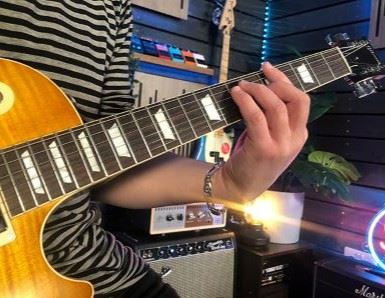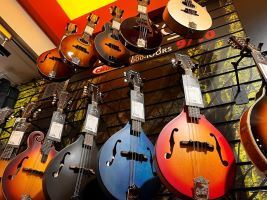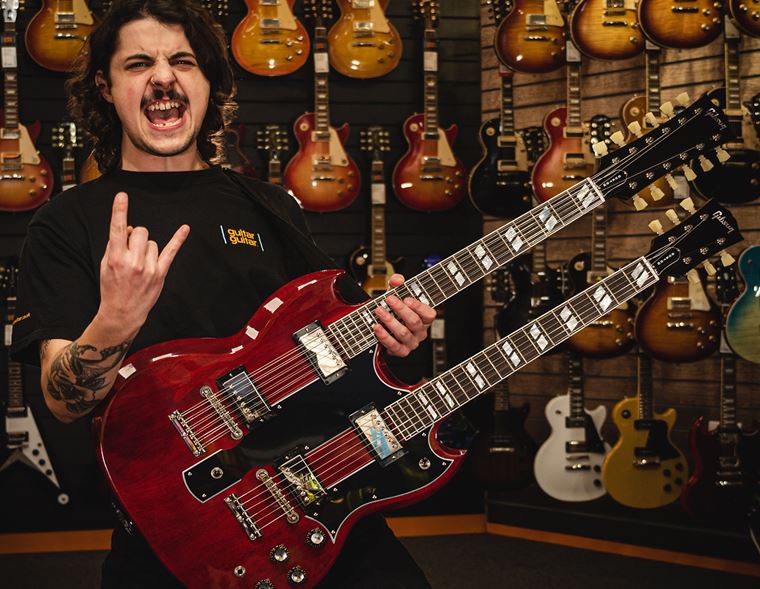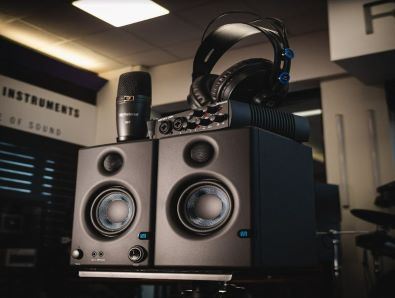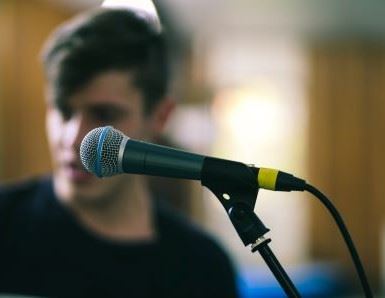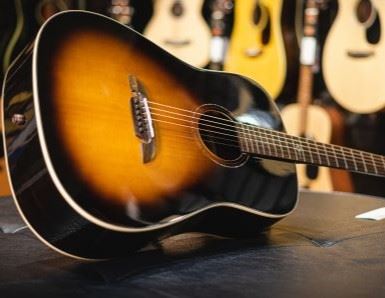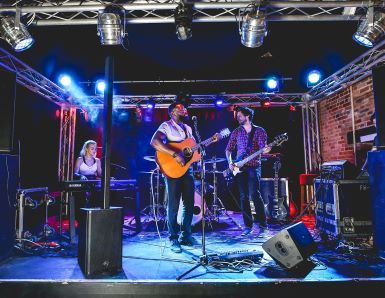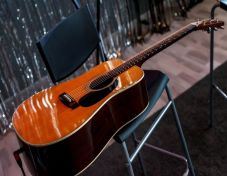Reverb vs Delay: The Difference Between Reverb and Delay
Disclaimer: The information in this article is provided by the guest blogger and does not necessarily reflect the views and opinions of guitarguitar.
What are the differences between reverb and delay?
Before we get into the specifics of each pedal, I should point out that delay and reverb are both effects that can be placed in an effects category, namely ambient effects.
Ambience is a term described as an atmospheric effect or even just background noise. In the context of guitar pedals, that’s any effect that uses an echoing pattern of time to create a trail or delayed repeats. In general, reverb pedals create trails while delay and echo pedals create repeating blocks of a recorded sound.
This means that broadly, we cite the difference between the two as follows:
- Delay: Repeating blocks of an original input based on timed intervals
- Reverb: Atmospheric trails that extend the original input and decay out, simulating a back and forth echo pattern
Again, these are both part of the ambient effects category, and are often used to create ethereal sounds, sometimes in conjunction with other effects.
The primary difference between them is how they handle time and the shape of their repeating patterns.
We’ll talk more about each effect individually.
Delay Pedals
So, what is a delay pedal used for? All delay pedals create a repeating pattern based on a time selection and a set number of repeats. Almost every delay pedal allows you to control the time of the recorded section and the number of times that section repeats.
More advanced controls include the following:
- Tap tempo
- Timing subdivision
- Modulation additive
- EQ mix of dry signal (original input)
- EQ mix of wet signal (repeats)
- Overall mix of wet and dry signal
More involved pedals will include filters and pitch shifting effects with delay. Some will also include tremolo while a lot of delay pedals actually combine delay and reverb into one stompbox.
But regardless of how it’s set up, the defining feature is the hard repeats. These can certainly have a trailing and decaying component – like reverb – but they’re far more rhythmic with a very specific timing.
Unlike delay, reverb does not operate in a timed or rhythmic fashion.
.jpg)
Reverb Pedals
“What is reverb used for?” you may be asking. Well - the reverb trail is meant to simulate a sound bouncing off surfaces multiple times, like you would hear in a large empty room. Thus, there is an element of echoing, though it’s happening with multiple delay lines close together. This gives you the trailing and decaying sound instead of the pronounced repeats that we hear in delay pedals.
This is different from delay because delay is simply recording a line and playing it back multiple times. A reverb pedal is technically an echo, but it’s bouncing back and forth off surfaces which doesn’t create the same timing and rhythm that we get in delays.
There are several different types of reverbs, most of which are now modelled in digital algorithms, though based on physical properties. For example, spring reverb is based off of a sound bouncing back and forth on a set of springs inside an enclosure. Plate reverb is a sound bouncing back and forth between two metal plates.
Here’s a more comprehensive list of modern reverb algorithms:
- Plate
- Spring
- Hall
- Room
- Church
- Shimmer
Reverb algorithms like Hall are pretty self-descriptive. They are made to simulate a noise bouncing back from a far away hall. The same is true of Room and Church. Pretty simple.
Defining Characteristics
Both of these effects can be tweaked and edited with a lot of different parameters. Delay is typically a little more flexible and easier to manipulate, while reverb has a lot more variety when it comes to modes and algorithms.
- Reverb: More types, modes, and algorithms
- Delay: More controllable parameters and time-related flexibility
However, I should also point out that there are a lot of different types of delay. Here are just a few:
- Ping pong
- Rhythmic
- Analog
- Pure echo
These aren’t quite as distinct as the reverb modes, so I’d argue that reverb is a bit better when it comes to algorithmic variety, but the two effects are arguably the most versatile in existence.
Ideal Use for Each Effect
Any guitar player in just about any scenario can make use of a reverb and/or delay pedal. They’re great for dressing up a clean tone and making it more interesting. I think of that as layering over a clean tone and giving it an ethereal or atmospheric quality. Ethereal effects are used a lot, particularly with modern guitar playing styles and even in heavier rock, metal and the goth genre. Ethereal creates a synth-like effect with soundscapes and washes of sounds.
If we’re really going to split hairs, you could argue that delay is more of a rhythm guitar player’s effect while reverb is more of a lead guitar player’s effect. With delay, rhythm players can create interesting rhythmic parts whereas lead guitarists could use delay to accentuate their solos and add ambiance to their sound.
But again, they’re both good fits in just about any situation.
.jpg)
Combining Delay and Reverb Effects
Reverb and delay, when packaged as an effects pairing, make one of the most compatible effects combinations. In fact, a lot of ambient pedals are built with both of these effects included. The Keeley Caverns V2 and Strymon Volante are a couple good examples.
This works because it combines the following qualities:
- Smooth ambient trails
- Rhythmic or ethereal echo effects
Obviously you can combine them using a separate delay and reverb source. A lot of guitar players will use reverb built into their amp (more on that below) and an external source of delay, usually a pedal.
Though I should add that reverb pedals are typically a better, more flexible source of reverb, than amp-based reverbs. Even the digital reverb pedals of our day are extremely good at modeling analog tones.
When you do combine these effects, it’s important to make sure that you keep trails and echoes short enough and that you avoid letting your notes cover over notes that follow. That can end up sounding too messy and undefined, meaning notes get lost in the ambient clutter.
What About Reverb in Amps?
You’ll notice that reverb is included in a lot of amplifiers, most notably the Fender tube amps. Amp reverbs were the original choice for guitarists, and are revered in their own right. These reverbs tend to sound really good, but aren’t quite as flexible as what you get in the digital pedals that are on the market today.
Even if you have reverb on your amplifier, adding a reverb pedal is worth it for the additional algorithms alone.
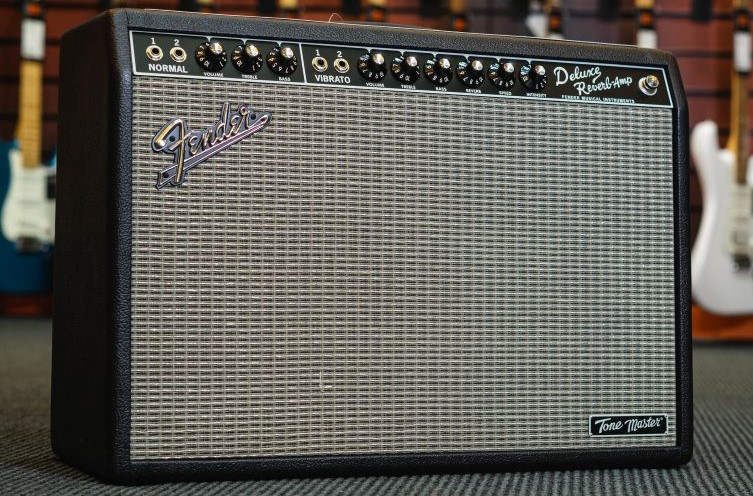
Conclusion
To summarise: Reverb and delay pedals are both categorised as ambient effects. There are a ton of different algorithms and effect modes between them, with an extensive list of tweakable parameters.
Reverb is made from a back and forth echo chamber effect, while delay is made from a recorded and repeated block of time, hence the original tape delay recorders.
We’d recommend both for most electric guitar players, especially those who play more of a modern style that relies less on blues and more on electronic/ethereal soundscapes.
Hopefully this rundown of the difference between delay and reverb has been helpful to you.
Author: Bobby Kittleberger
Bio: Bobby Kittleberger is the founder and editor of Guitar Chalk, and is responsible for developing most of its content. He has worked with leading guitar industry companies including Sweetwater, Ultimate-Guitar, Seymour Duncan, PRS, and many others.

